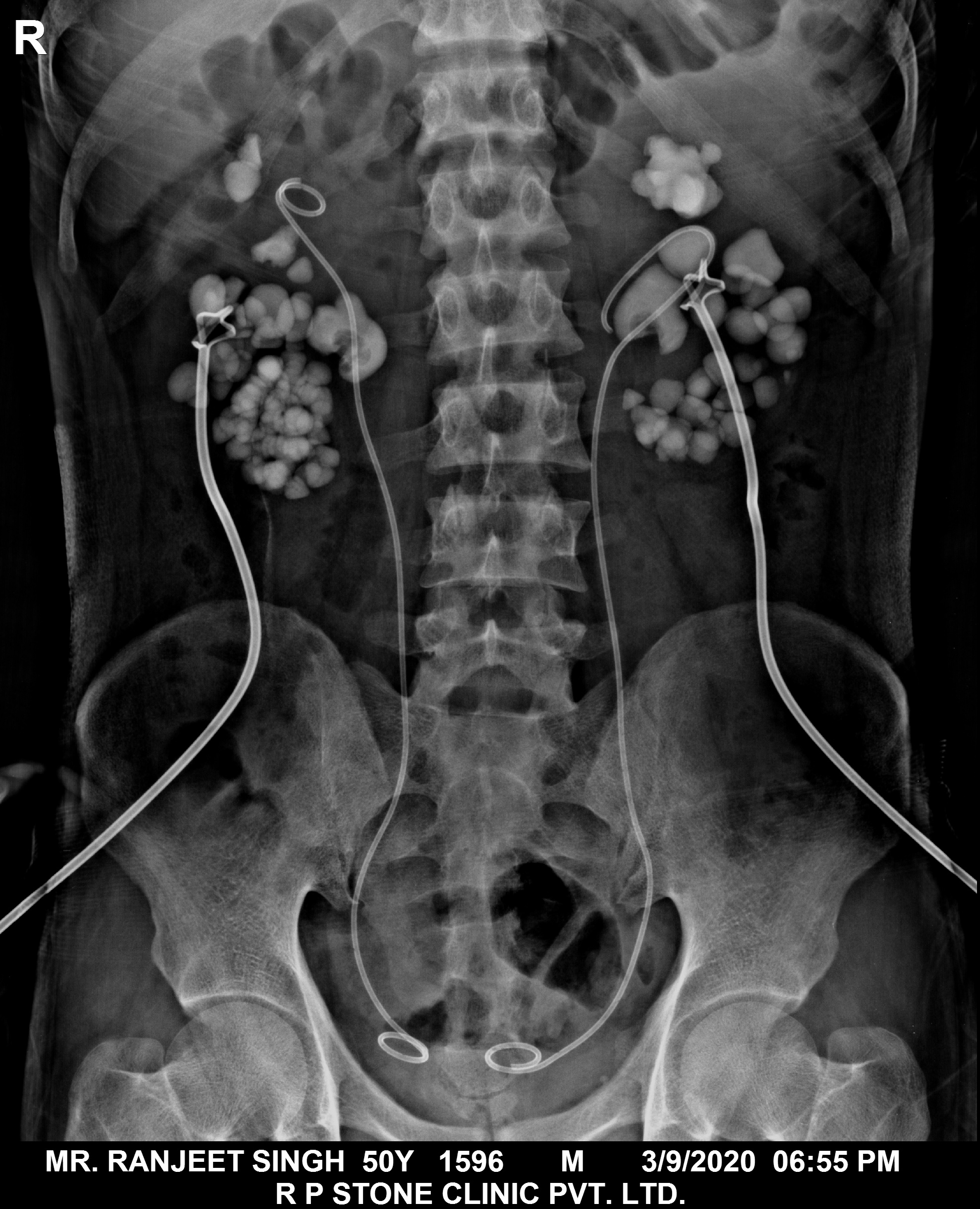RIRS Surgery & Double J Stenting :-
Double – J stent commonly known as D – J Stent is a self-retained stent placed in the ureter. Commonly used D – J stent is made of polyurethane. The name D – J stent refers to J shape at each end of the stent. One J shaped end remains in the collecting part of the Kidney called the pelvicalyceal system & the other J is placed in the Urinary bladder. This D-J stent is a thin tube usually 5 or 6 French in diameter & 26 to 30 cm. in length.
D-J stenting before RIRS Surgery :- Presenting for RIRS Surgery is some times used several days before the patient actually undergoes RIRS Surgery. The placement of a D-J stent in the ureter dilates the ureter & prepares the same for easy passage of an access sheath or a flexible ureteroscope. We do not practice presenting as a routine in R P Stone Clinic, however, in the case of narrow ureters, it sometimes become necessary to adapt this procedure of presenting.
- D-J stenting after RIRS Surgery:- In most of the cases, D-J stent is routinely placed after RIRS Surgery for an average period of 1 to 2 weeks. We rarely leave these stents for longer times as these are associated with several side affects.
- D-J stenting after RIRS Surgery in Prestented patients:- We invariably avoid reinserting D-J stents after RIRS Surgery in patients who already have been stented before undergoing RIRS Surgery.
- D-J stenting with stent extraction strings after RIRS Surgery:- We resort to this type of stenting quite often where stent extraction strings are attached to the D-J stents. This avoids an additional procedure of Cystoscopy & stent removal after RIRS Surgery. These strings are lying outside human body & can be easily removed along with stent even by patient himself or herself. However, this type of stent can not be used in infected cases as it adds to the infection. Even in non infected cases, there is a small risk of ascending urinary tract infection in this type of stenting. We do not leave these stents in patients for more than 3 to 4 days
- No D-J stenting after RIRS Surgery:- We sometimes perform RIRS Surgery with out D-J stenting. We do this in select group of patients who have small stones & surgery time is short. These patients are either found to have stones in their Kidneys during routine Medical examination before joining job in Army or before sailing as Navy Merchant or when they need to be stone free for any other job or reason. These patients usually have small kidney stones & are mostly asymptomatic. We are treating these patients for over 20 years now & we have performed RIRS Surgery in hundreds of this category of patients who are otherwise asymptomatic.
- All D-J stents after RIRS Surgery need to be removed better sooner than later.
- Most important issue of D-J stenting is problems associated with D-J stenting. Here is a list of these problems:-
- Stent Discomfort
- Irritative bladder symptoms
- Hematuria
- Suprapubic and Lumbar pain on the side of stent during urination
- Urinary tract infection
- Stent Intolerance
- Forgotten DJ Stent
